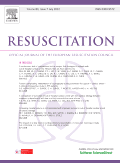
RESUSCITATION
Scope & Guideline
Shaping the Future of Patient Care with Esteemed Research
Introduction
Aims and Scopes
- Cardiac Arrest Management:
Research on various interventions and protocols for managing cardiac arrest, including advanced life support techniques, airway management, and the use of automated external defibrillators (AEDs). - Post-Cardiac Arrest Care:
Studies focusing on the care and rehabilitation of patients after cardiac arrest, including neuroprognostication, long-term outcomes, and quality of life assessments. - Innovative Technologies in Resuscitation:
Exploration of new technologies such as machine learning, artificial intelligence, and telemedicine in enhancing CPR training, monitoring, and outcomes. - Public Health and Community Interventions:
Investigations into community-level interventions, public awareness campaigns, and education programs aimed at increasing bystander CPR rates and improving access to defibrillation. - Epidemiology and Outcomes Research:
Analysis of trends, risk factors, and outcomes associated with cardiac arrest, including the impact of socioeconomic factors and healthcare systems.
Trending and Emerging
- Use of Artificial Intelligence:
There is a notable increase in research exploring the application of AI in predicting cardiac arrest outcomes, monitoring CPR quality, and optimizing emergency response systems. - Telehealth and Remote Monitoring:
Emerging studies focus on the use of telehealth technologies for real-time monitoring of patients during and after cardiac arrest, highlighting a shift towards remote healthcare solutions. - Community-Based Interventions:
Research on community engagement strategies, such as the deployment of AEDs via drones and bystander CPR training initiatives, is gaining traction as a means to improve survival rates. - Neuroprognostication Advances:
There is a growing interest in refining neuroprognostication methods, including the use of EEG and biomarkers to predict neurological outcomes after cardiac arrest. - Public Health and Policy Influence:
Emerging themes also reflect the importance of public health policies and community-level actions to enhance cardiac arrest response and education.
Declining or Waning
- Traditional CPR Techniques:
There appears to be a waning interest in traditional CPR techniques without the integration of new technologies or methods, as research increasingly emphasizes innovative approaches. - Pharmacological Interventions:
Studies focusing on the effects of pharmacological interventions during resuscitation, such as sodium bicarbonate or calcium administration, have decreased as the focus shifts toward more holistic and integrated care approaches. - Basic Life Support (BLS) Guidelines:
While foundational, there is less emphasis on basic life support guidelines alone, as much of the current research seeks to integrate BLS with advanced techniques and technology.
Similar Journals
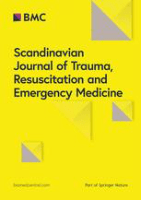
Scandinavian Journal of Trauma Resuscitation & Emergency Medicine
Unlocking New Frontiers in Critical Care and ResuscitationThe Scandinavian Journal of Trauma Resuscitation & Emergency Medicine, published by BMC, stands as a leading open-access platform dedicated to advancing the fields of trauma, resuscitation, and emergency medicine since its inception in 2008. With an ISSN of 1757-7241 and an impressive track record, this journal has established itself in the top quartile of critical care and emergency medicine, achieving Q1 rankings in both categories for 2023. Its Scopus rankings further underscore its importance, placing it among the top 11 journals in emergency medicine and the 23rd in critical care and intensive care medicine, signaling a strong impact within the academic community. As we converge toward 2024, the journal continues to provide researchers, clinicians, and students with valuable access to cutting-edge research and developments in the sector, contributing significantly to knowledge, practice, and policy in emergency care. Located in the heart of the United Kingdom, the journal remains dedicated to its mission of fostering innovation and dissemination of high-quality research, ensuring that vital medical advancements reach those who need them most.
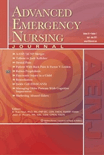
Advanced Emergency Nursing Journal
Transforming Emergency Care Through Research and InnovationAdvanced Emergency Nursing Journal, published by Lippincott Williams & Wilkins, stands as a key resource within the domains of Emergency Medicine and Emergency Nursing. With a commitment to advancing the field, this journal provides a platform for rigorous research, critical reviews, and innovative practices aimed at enhancing patient care in emergency settings. Though it holds a Q3 ranking in both related categories as per the 2023 metrics, its global reach spans various aspects of emergency care, promising insights that are crucial for both professionals and academics alike. Covering topics from clinical procedures to policy analysis, the journal invites submissions that aim to bridge theory and practice, highlighting the importance of evidence-based approaches in emergency nursing. Researchers, educators, and healthcare practitioners can Find more information and explore their own contributions in a dynamic environment that continuously evolves with the field. Whether you're seeking to stay current with the latest advancements or to publish your findings, this journal is an essential asset for those dedicated to improving care in urgent medical situations.

CorSalud
Transforming heart health through accessible research.CorSalud is a distinguished open-access journal that has been paving the way in the fields of cardiology and cardiovascular health since its inception in 2009. Published by CARDIOCENTRO ERNESTO CHE GUEVARA in Cuba, this journal serves as a critical platform for disseminating cutting-edge research, clinical studies, and innovative practices pertaining to heart and vascular health. With its commitment to accessibility, CorSalud encourages global collaboration among researchers, professionals, and students dedicated to advancing cardiovascular medicine. The journal is recognized for its rigorous peer-review process and aims to foster advancements in the understanding, prevention, and treatment of cardiovascular diseases. By providing immediate online access to high-quality research, CorSalud plays an essential role in enhancing the scientific dialogue and contributing to improved health outcomes worldwide.
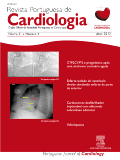
Revista Portuguesa de Cardiologia
Fostering collaboration and knowledge in the heart of cardiology.Revista Portuguesa de Cardiologia, published by Elsevier España SLU, stands as a pivotal resource in the realm of Cardiology and Cardiovascular Medicine. With its origins tracing back to 1970, this journal has cultivated a robust academic presence, achieving a 2023 Q3 ranking in its category, and currently holding a position of #220 out of 387 on the Scopus rankings, placing it within the 43rd percentile of its field. This open access journal, available since 2011, aims to disseminate high-quality research and insights relevant to contemporary cardiovascular issues. Its commitment to accessibility and knowledge exchange enhances its importance for clinicians, researchers, and students alike, fostering a more informed community in the fight against cardiovascular diseases. Operating from its base in Barcelona, Spain, the journal welcomes contributions that further the understanding and treatment of heart conditions, contributing significantly to the advancement of cardiovascular health.

World Journal of Cardiology
Advancing cardiovascular knowledge for a healthier world.World Journal of Cardiology, published by BAISHIDENG PUBLISHING GROUP INC, stands out as a pivotal resource in the field of cardiology and cardiovascular medicine. With an ISSN of 1949-8462, this journal serves a global audience, promoting knowledge dissemination and collaboration among researchers, healthcare professionals, and students dedicated to advancing cardiovascular health. The journal demonstrates its credibility and impact in the field by achieving a respectable Q2 ranking in the 2023 category of Cardiology and Cardiovascular Medicine. Notably, it is listed in the Scopus database, ranking #189 out of 387 journals, placing it in the 51st percentile, which underscores its relevance and contribution to contemporary cardiovascular research. Although it operates under a subscription model, the journal provides diverse access options, ensuring that critical findings reach a wide audience. Through its comprehensive scope and commitment to publishing high-quality articles, the World Journal of Cardiology plays a vital role in shaping the future of cardiovascular science, making it an invaluable asset for those involved in this essential discipline.
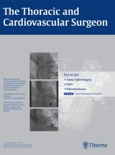
THORACIC AND CARDIOVASCULAR SURGEON
Transforming patient care through cutting-edge research.THORACIC AND CARDIOVASCULAR SURGEON, published by GEORG THIEME VERLAG KG, is a prestigious journal dedicated to the fields of cardiology, cardiovascular surgery, and pulmonary medicine. Since its inception in 1973, the journal has served as a vital platform for disseminating cutting-edge research and innovative techniques, contributing significantly to advancements in patient care and surgical practices. With an emerging recognition evidenced by its category quartiles, ranking Q3 in Cardiology and Cardiovascular Medicine and Q2 in Surgery as of 2023, it positions itself as an essential resource for both clinicians and researchers alike. Although this journal does not currently offer Open Access options, it maintains a strong impact with Scopus rankings that highlight its relevance within the medicine and surgery disciplines. The journal is particularly committed to bridging the gap between theoretical research and practical application, making it crucial for professionals aiming to stay informed on the latest developments in thoracic and cardiovascular health. Join a community of scholars dedicated to excellence in these critical areas of medicine.
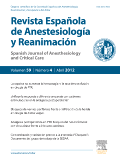
Revista Espanola de Anestesiologia y Reanimacion
Shaping the future of pain management and anesthesia.Revista Española de Anestesiología y Reanimación, an esteemed journal published by Elsevier, serves as a pivotal resource at the intersection of anesthesiology, critical care, and pain medicine. Established in 1963, this journal has continually contributed to the evolving dialogue in these fields, showcasing innovative research that informs practice and enhances patient care. With a current Q3 ranking in both anesthesiology and critical care disciplines as of 2023, it represents a vital platform for clinicians and researchers alike, who are committed to advancing knowledge and improving clinical outcomes. Though not an open-access publication, Revista Española de Anestesiología y Reanimación ensures rigorous peer-review processes and offers insights from leading experts around the globe, making it an invaluable reference for professionals seeking to stay abreast of the latest advancements and trends. Its bibliometric indicators and Scopus rankings affirm its relevance and influence within the academic community, solidifying its role as a cornerstone of anesthesiology and intensive care research.

Clinical and Experimental Emergency Medicine
Transforming urgent care with impactful findings.Clinical and Experimental Emergency Medicine, published by the SEOUL KOREAN SOCIETY OF EMERGENCY MEDICINE, is a premier Open Access journal dedicated to advancing knowledge and practice within the fields of emergency medicine and emergency nursing. With an ISSN of 2383-4625 and an E-ISSN of 2383-4625, this journal has established itself prominently in the academic community, achieving a notable Q2 ranking in both Emergency Medicine and Emergency Nursing categories in 2023. The journal is committed to providing highly relevant research, innovative clinical practices, and educational resources that address the urgent and evolving challenges in emergency care. With a vision to foster collaboration among researchers, practitioners, and students, it aims to contribute significantly to the body of knowledge that enhances emergency medical services and improves patient outcomes globally. Accepting submissions and offering Open Access since its inception in 2014, the journal is positioned as a key resource for those dedicated to the advancement of emergency medicine.
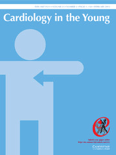
CARDIOLOGY IN THE YOUNG
Connecting professionals dedicated to young cardiovascular health.CARDIOLOGY IN THE YOUNG is a premier journal published by Cambridge University Press, dedicated to the field of pediatric cardiology and cardiovascular medicine. Established in 1991, this journal has become a vital resource for researchers, clinicians, and students, focusing on the latest advancements and clinical practices related to heart conditions in children and young adults. With an ISSN of 1047-9511 and an E-ISSN of 1467-1107, it operates under a non-open access model, ensuring high-quality, peer-reviewed research is accessible to professionals in the field. The journal is recognized in the Q3 category across several disciplines, including Cardiology and Cardiovascular Medicine, Medicine (miscellaneous), and Pediatrics, Perinatology and Child Health, highlighting its significant academic standing within the medical community. As it converges its focus towards 2024, CARDIOLOGY IN THE YOUNG remains committed to enhancing the understanding and treatment of cardiovascular disorders, making it an essential publication for those devoted to advancing health outcomes in young populations.
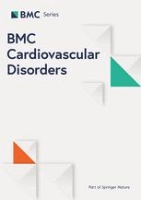
BMC Cardiovascular Disorders
Connecting researchers to transform cardiovascular health.BMC Cardiovascular Disorders is a premier open access journal dedicated to the field of cardiology and cardiovascular medicine, published by BMC, a leading publisher in the scientific community. Since its inception in 2001, this journal has provided a platform for high-quality research, showcasing innovative studies and critical reviews that contribute to the understanding and management of cardiovascular diseases. With an impressive impact factor and a rank in the Q2 category for 2023 within its field, BMC Cardiovascular Disorders stands at the forefront of cardiovascular research, enabling accessibility to a wealth of information that fosters collaboration and advancements in patient care. The journal's commitment to open access ensures that research is widely disseminated and easily accessible to researchers, practitioners, and students globally, enhancing the dialogue around cardiovascular health and disease prevention. Located in the United Kingdom, BMC Cardiovascular Disorders consistently aims to promote excellence in the study and treatment of cardiovascular conditions, encouraging the exchange of knowledge that ultimately benefits public health.